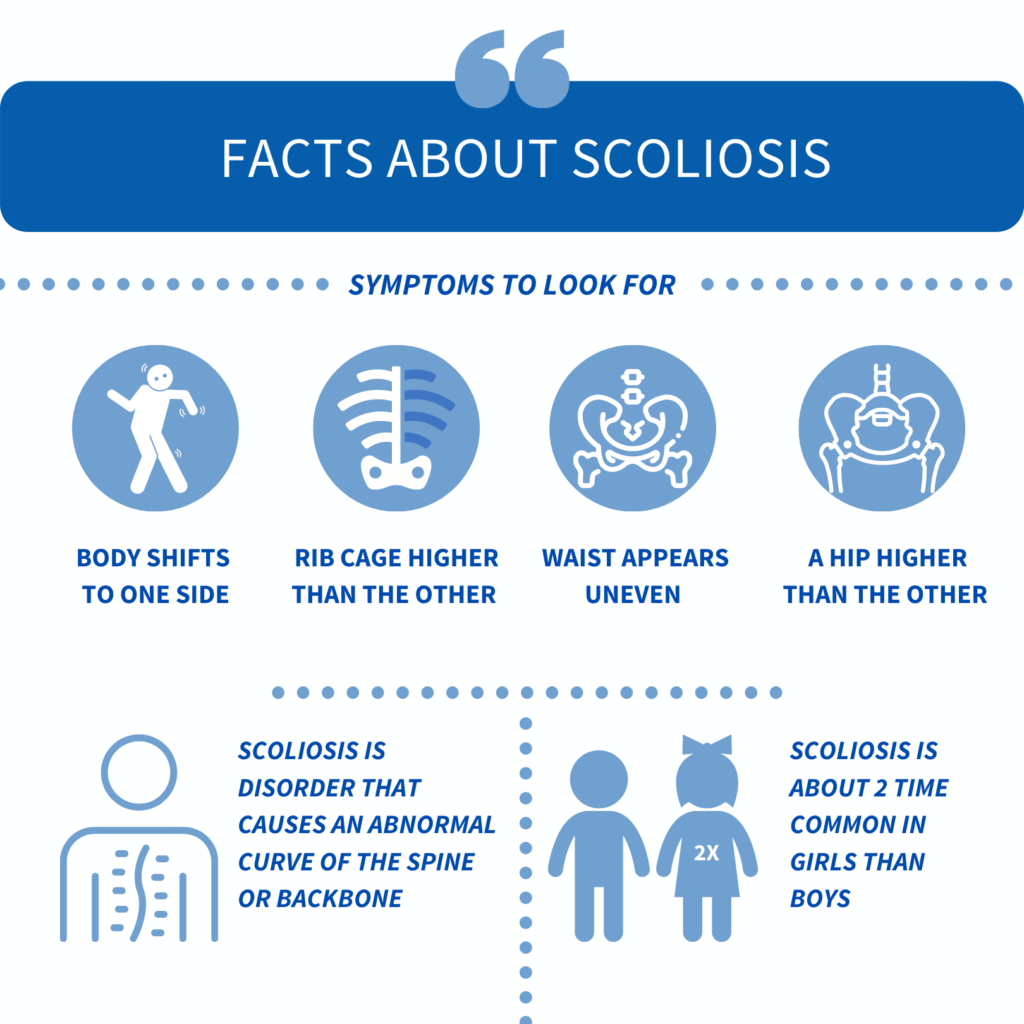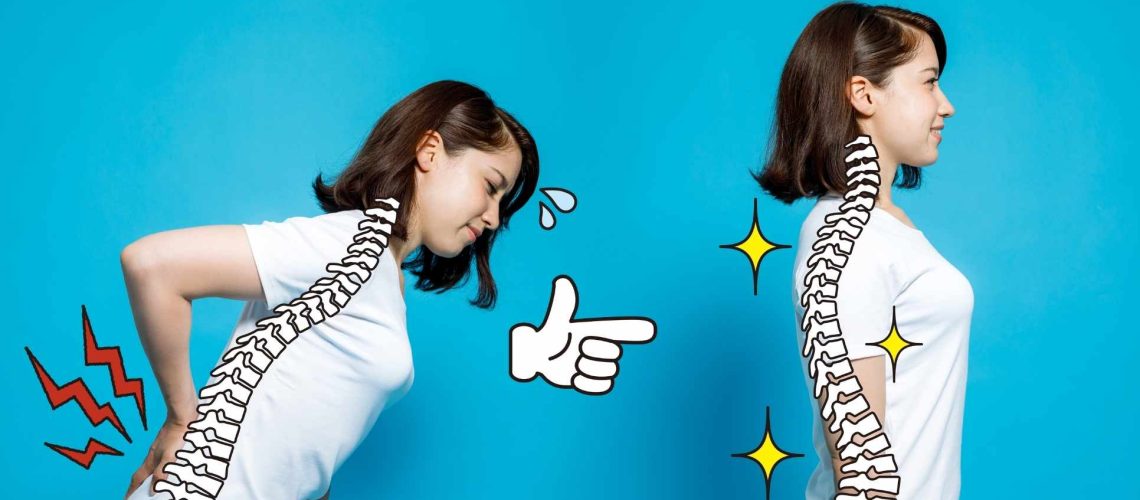Scoliosis affects many individuals in Canada. Mild scoliosis doesn’t need treatment, but more severe cases cause health issues.

- The primary age of onset for scoliosis is 10-15 years old, occurring equally among both genders
- Females are eight times more likely to progress to a curve magnitude that requires treatment
- Scoliosis affects 2-3 percent of the population
- Scoliosis can develop in infancy or early childhood
What is scoliosis?
Scoliosis is a medical condition in which a person’s spine has a sideways curve. It is most often diagnosed in childhood or early adolescence. Viewed from the back, your spine should look like a straight line. But people who have scoliosis have an abnormal S- or C-shaped curve to their spine.
The natural curves position the head over the pelvis and work as shock absorbers to distribute mechanical stress during movement. In some, the degree of curve is stable, while in others, it increases over time.
The X-ray may tell the size of the curve:
- Small curve: less than 20 degrees
- Moderate curve: between 20 and 50 degrees
- Large curve: greater than 50 degrees
Mild scoliosis does not typically cause problems, but more severe cases can affect breathing and movement. Pain is usually present in adults and can worsen with age.
What are the symptoms?
You should pay attention to these early signs:
- One shoulder or hip that looks higher than the other
- The head does not look centered over the body
- One shoulder blade that sticks out more than the other
- The waistline is flat on one side, or the ribs look higher on one side when you bend forward at the waist
- Clothes not hanging properly
How is it treated?
There are several different ways to treat scoliosis. The type of treatment selected depends on the type and size of the curve.
Mild cases of scoliosis usually do not need treatment. In severe cases you may need to have surgery.
Children who have mild scoliosis may need regular checkups to see if there have been changes in the curvature of their spines as they grow.
Schroth Method
The Schroth Method is a non-surgical option for scoliosis treatment. It uses exercises customized for each patient to return the curved spine to a more natural position. The goal of Schroth exercises is to de-rotate, elongate and stabilize the spine in a three-dimensional plane. This is achieved through physical therapy that focuses on:
- Restoring muscular symmetry and alignment of posture
- Breathing into the concave side of the body
- Teaching you to be aware of your posture
- The purpose of these exercises is to derotate, deflex and to correct the spine in the sagittal plane while elongating the spine
Scientific Exercises Approach to Scoliosis (SEAS) exercises
There are also other exercises that have been found effective for scoliosis treatment eg Scientific Exercises Approach to Scoliosis (SEAS) exercises.
- Effective in reducing the rate of progression of scoliosis compared with usual care and help to avoid brace prescription
- SEAS is based on a specific active self-correction technique performed without external aid and incorporated in functional exercises. Evaluation tests guide the choice of the exercises most appropriate to the individual patient
- Improvement of the stability of the spine in active self-correction is the primary objective of SEAS
- SEAS can be performed as an outpatient (two/three times a week 45 for minutes) or as a home program to be performed 20 minutes daily.
Breathing exercises
Breathing exercises combined with the thoracic active mobilisations are another important aspect of physiotherapy.
- The severity of the curvature can cause pressure on the airways and lungs
- The patient can experience trouble while breathing
A study into the effectiveness of a respiratory rehabilitation program in children with scoliosis that included:
- Respiratory education techniques (abdominal-diaphragmatic ventilation, thoracic mobilisation, ventilation at rest and during activities of daily living) for mobilisation and prevention of stiffness of chest and skeletal muscles
- Postural drainage and vibration to evacuate mucus and decrease the resistance of the airways
- Relaxation techniques to make sure that the patients would have better control of respiration (to counteract dyspnea)
It found that respiratory rehabilitation had a positive effect on increasing pulmonary function of children with scoliosis.
Patient Education at the Osteo Health Clinic
In order to improve health care outcomes, we create patient education materials. We are gathering insights from industry experts to share with you. You’ll be able to understand and manage your own health and medical care throughout your life.
- We use the best available technologies, educational videos, research updates
- Our regular basis articles let you know about the latest research supporting our evidence-based approach for prevention, treatment, and rehabilitation of musculoskeletal disorders.
- We strive for interactive healthcare. It helps us to engage you, overcome barriers to health services caused by the distance between you and our clinic, and stay in touch with you in real-time.
Surgical Treatment
Severe scoliosis typically progresses with time.
Those who have curves beyond 40 degrees to 50 degrees are often considered for scoliosis surgery. But surgery does not perfectly straighten the spine. A specialist may suggest scoliosis surgery to reduce the severity of the spinal curve and to prevent it from getting worse.
Pieces of bone or a bone-like material are placed between the vertebrae. Metal rods, hooks, screws or wires typically hold that part of the spine straight and still while the old and new bone material fuses together.
Finally, complications of spinal surgery may include bleeding, infection, pain or nerve damage. Rarely, the bone fails to heal and another surgery may be needed.

